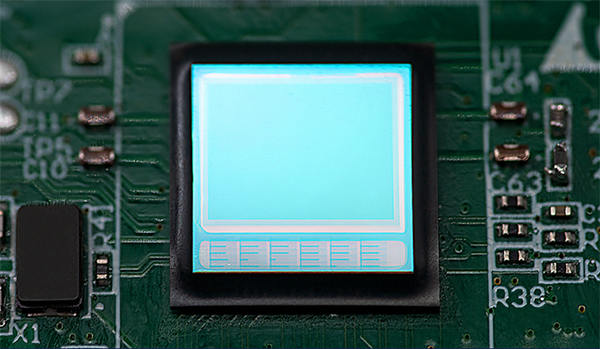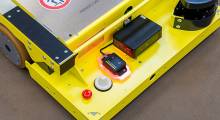Lidar, radar, and vision cameras are all part of the mix for machine sensing. TriEye Ltd. last week said it is working with machine controls provider Trimble Inc. to explore new applications for its short-wave infrared sensors. The companies will collaborate to enable TriEye's systems to operate in all weather and lighting conditions. The goal is to provide autonomous vehicles and robots with visual perception to detect potential hazards.
Tel Aviv, Israel-based TriEye is a fabless semiconductor company developing complementary metal-oxide-semiconductor (CMOS) short-wave infrared (SWIR) sensors. Its technology enables high-definition imaging under common low-visibility conditions. Founded in 2017, the startup said its sensors enable machine vision systems to operate cost-effectively in comparison with existing technology. TriEye was a 2020 CES Innovation Award honoree.
“The integration of TriEye's SWIR sensors with Trimble's advanced autonomous solutions can result in a superior perception capability that brings the industry one step closer to safe and reliable autonomous operations,” stated Aviad Almagor, vice president of the Emerging Technologies division at Trimble. “The unique capabilities of SWIR can enable capturing critical data imagery that enhances spatial awareness for autonomous machines.”
SWIR could clarify perception
The collaboration will focus on integrating TriEye's SWIR sensors with Trimble's advanced autonomous systems to deliver critical image data at all times. This will help to improve safety, operability, and reliability of next-generation advanced driver-assistance systems (ADAS) and autonomous vehicles, said the partners.
“SWIR is a key component in sensing technology, allowing autonomous systems to detect hazards that can't otherwise be seen in a variety of conditions, such as fog, smoke, night, dust, and sun glare,” said Ziv Livne, chief business officer at TriEye. “Our solution enables safer and more reliable autonomous operations by providing the same capabilities in a low-cost and compact high-definition SWIR sensor.”
Additional applications and industries
Beyond enhanced visibility, the companies will evaluate TriEye's remote-sensing capabilities for material identification. TriEye and Trimble added that SWIR could add value across domains such as transportation, agriculture, oil and gas, and construction.
For 40 years, Trimble has developed positioning, modeling, and connectivity offerings, as well as data analytics and enterprise lifestyle systems. The Sunnyvale, Calif.-based company said it has more than 2,000 patents worldwide, development centers in over 15 countries, and employees in more than 40 countries.
“Working together with Trimble will allow us to better understand the domain-specific needs of construction and agriculture equipment professionals and to deliver a solution that addresses the industry challenges to leverage and adopt autonomous vision systems,” Livne said. “We're excited to see Trimble's interest in our technology and the potential applicability for various markets.”
Article topics
Email Sign Up
















